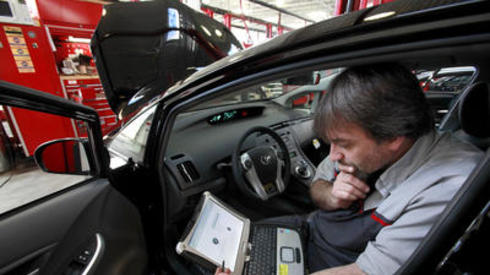A big change is under way, and it requires us to start thinking of cars very differently. Vehicles that drive themselves are the clearest example of what happens when cars transform into full-scale, general-purpose computing systems. But it’s not the only example. Self-driving and connected cars will bristle with sensors, negotiate with traffic lights, talk to each other about safety conditions, join into train-like platoons, and become members of intelligent urban transit networks. Not only that but we will be able to relax in our cars, continuing about our busy day, with all of the available technology at our fingertips.
Historically, the car industry has focused on passive safety — items like seatbelts and airbags. With the arrival of active safety technology that lets vehicles take pre-emptive action, cars will use data to help them decide what to do when drivers aren’t paying attention or don’t know what to do.
Solving a lot of these issues simply boils down to communication. Sure, cars are getting more computing smarts, but so much of what’s promised requires more data, and that requires ways to transmit it. How will that happen? As with personal computing, it will be a bit of a mess, with multiple networking technologies for multiple needs.
Computing today uses a handful of networks for different circumstances — Wi-Fi, 3G, 4G, and Bluetooth among them. When automotive computing becomes a facet of personal computing, you can expect those standards to carry over. But then you can add some new network technologies designed to serve vehicles. The biggest ones are the 802.11p and the accompanying higher-level dedicated short-range communications (DSRC), which govern how vehicles communicate with each other (V2V) and with infrastructure (V2I). That technology, which rides the 5.9GHz frequency range for radio communications, can be used for things like collision avoidance, managing traffic at intersections, and linking cars into coordinated, fuel-efficient groups called ‘platoons.’
Car manufacturers are worried about interference on the 5.9GHz bandwidth if the U.S. Federal Communications Commission permits other uses of the spectrum.



